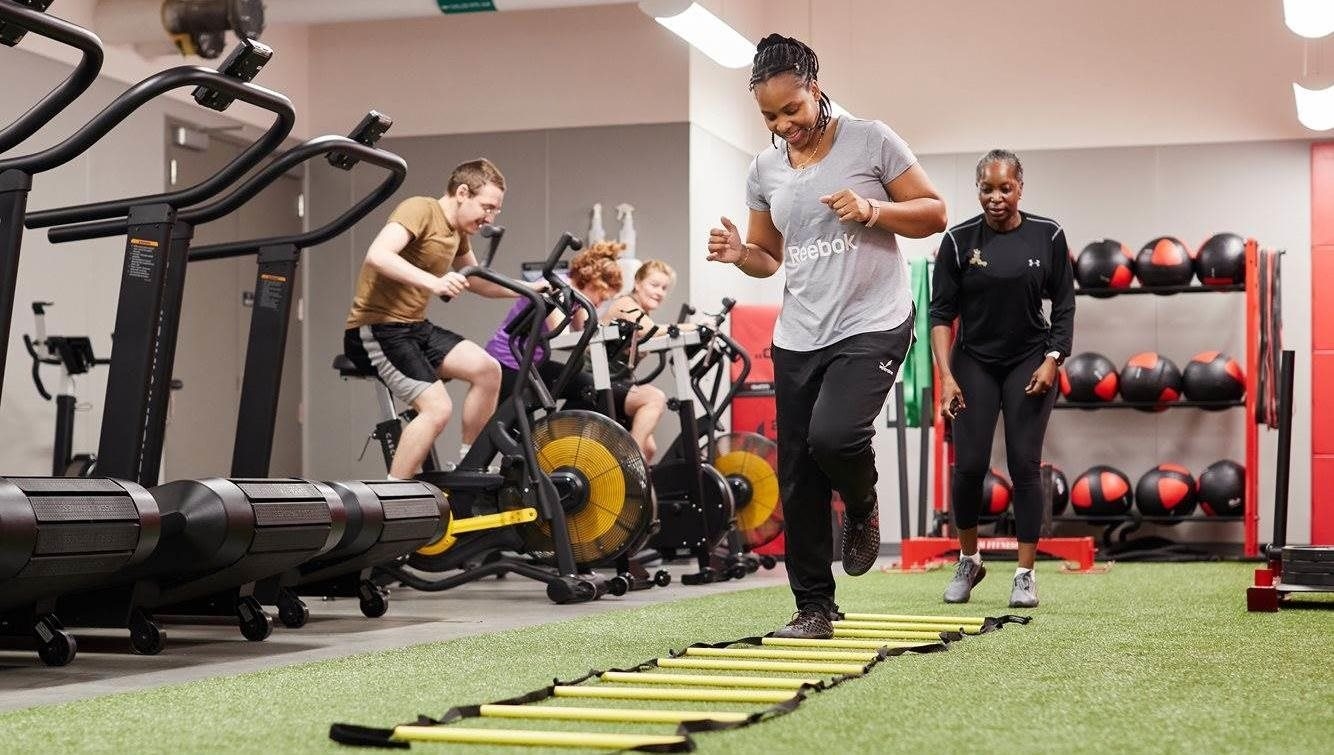Physical Activity

Active Break Examples
-
"Take 10" for an Active Break
"TAKE 10 for an Active Break" is a call to action to prioritize taking breaks for mental and physical health. Daily short active breaks during the workday are also very valuable in helping with productivity, focus and mood.
The “10” can be:
- The number of repetitions of an activity like 10 squats, shoulder circles, deep breaths or desk pushups to break up long periods of sitting.
- The amount of time for a break activity like a 10-minute walking meeting or a 10-minute mindfulness meditation to improve your focus and decrease stress.
-
Group Walks
Organizing group walks with your team is another great way to promote a healthy lifestyle and to increase productivity in your workplace. These can be held as a weekly or monthly team activity, or as part of a lunchtime ritual.
How to start a group walk in your office:
- Decide where to meet for the walk, where to go and how long you will walk for. You may want to check the NCC trail maps before heading out.
- Look for safe locations outdoors that are quiet enough for people to hold a conversation. For example, suggested trails on NDHQ(Carling) map are focused on walking paths and limit walking on the road.
- Send a meeting invite, so people remember to bring their walking shoes. This can be a reoccurring weekly invite. Reschedule in case of poor weather.
- Group walks can also be hikes in more wooded/ hilly areas and may include a Picnic lunch to have a meeting there. This is an option for team building instead of going to a coffee shop, restaurant or mess.
Group walks can also be extended to more than just one department. Putting up posters around your office area can encourage members of other departments to join in as well. Keep the conversation going by ending the group walk with coffee or tea.
-
Stretching and Breathing
Stretching and breathing exercises can also be very beneficial for physical wellbeing and can be done on an individual basis. Providing tools to team members on how to practice deep breathing and stretches contributes to a supportive work environment and can also normalize these practices.
Consider finding a small room or space near your office to create a "meditation room" or relaxation room for people to be able to take a "Time out" for their mental health. A few have already been created around the NCR.
Pro-tip: use these practices to start your team meetings! Put up posters of desk stretching and guided deep breathing around your office. Another great way to set the tone. -
Walking Meetings or Third Location Meetings
Walking meetings work best with smaller groups, one on one, or during audio calls. Walking meetings are good for brainstorming and problem-solving, however might not be the best option if there is a lot of note-taking involved. If you are on an audio call, be mindful of where you choose to walk, selecting areas with lower traffic, and look where you are going to avoid walking distracted.
Tips for holding walking meetings:- Plan ahead, map out a route (indoors or out)
- Give prior notice, choosing best time to walk (time of day, weather, location)
- Prepare an agenda, send it to everyone ahead of time to reference
Third location meetings can be done with the whole team. Plan for an appropriate location (seating, sun/shade, noise, space), at a walking distance of 5-15 minutes away, and hold your meeting there. Not only do you get some extra steps in your day, it changes the scenery and the vibe of the group.
PSP Teams in the NCR
Get active with your local NCR PSP Teams
-
PSP Fitness
Contact the local NCR PSP Fitness team to request unit PT sessions, or join virtual classes on CAF Fitness, the place of choice for virtual fitness programming! Live class timings don't work with your schedule? No problem, pick your workout from the CAF Fitness Workout Playlist anytime!
For more information about our services, please send us an email at NCRFitness.CPRCN@forces.gc.ca. -
PSP Health Promotion
Encourage your members to take a break, build their resilience and increase unit morale all at the same time by inviting PSP Health Promotion to your next PD session. Request a briefing on wellness topics such as stress management, mental fitness, nutritional wellness and more. Perhaps plan for a wellness briefing to be before or after a group walk, during a meeting, as a “Lunch and Learn”, or even before a unit PT.
-
PSP Hylands Golf Course
Did you know that the Hylands Golf Club not only has golf in the warmer months, but also provides a wide array of activities for CAF members and their families during the winter? Snow shoeing, fat biking, cross-country skiing and more are available! Plan for a fun filled active event at Hylands Golf Club by reserving ahead online or by calling.
-
Tips to Add an Extra Edge to Your Initiative
- Provide healthy snacks after the break. Find ideas here.
- Set a calendar reminder.
- Schedule a calendar meeting every week or two to take a break
- Assign an active break leader in your unit to encourage people to move more
- Plan your active breaks around National Health Promotion Awareness days
- Get inspired and find more activity ideas with Canada Life Workplace Strategies for Mental Health



